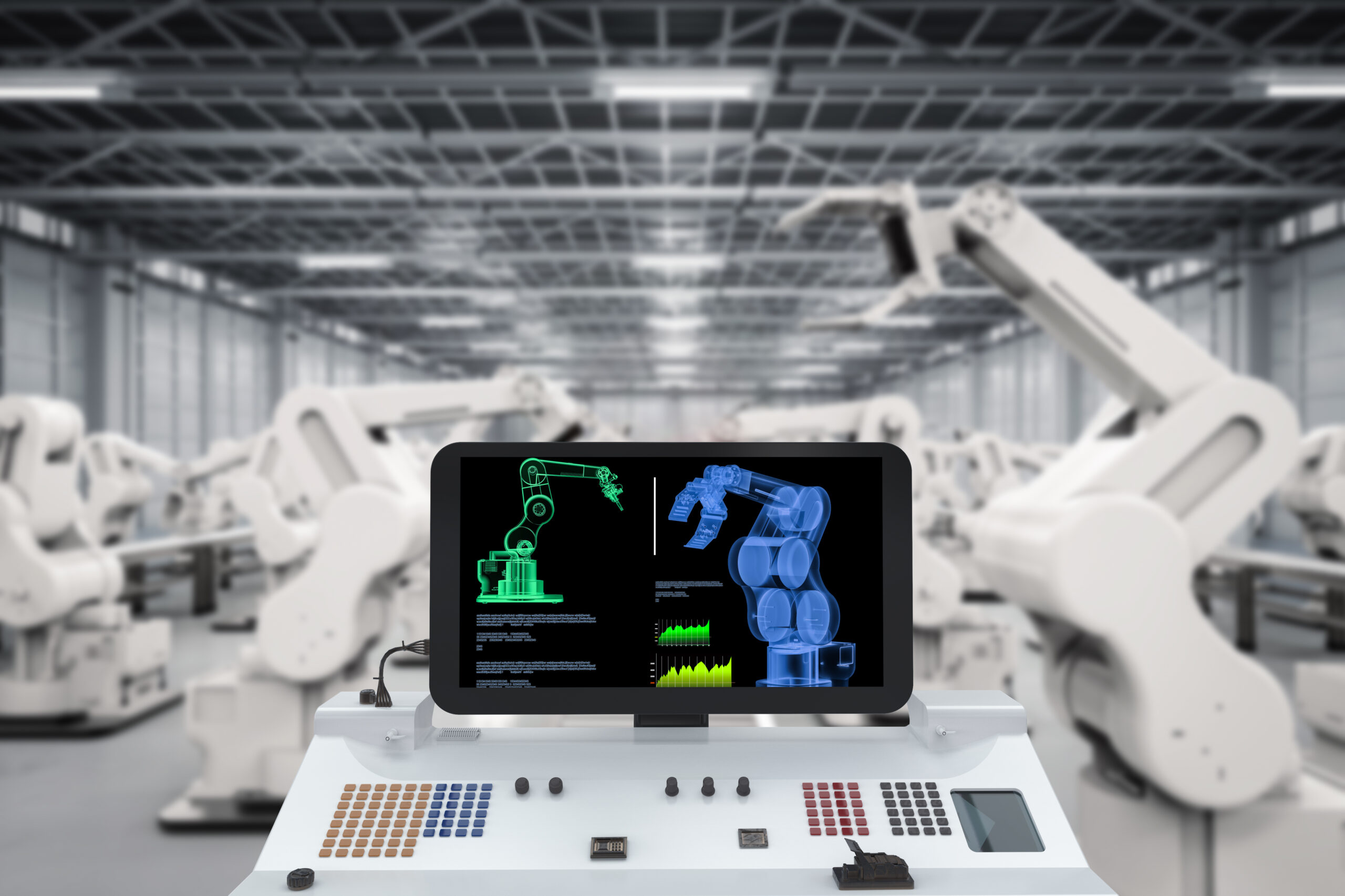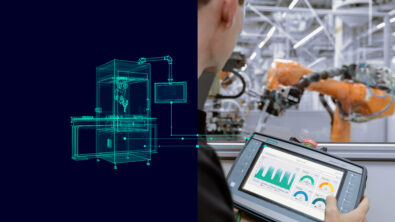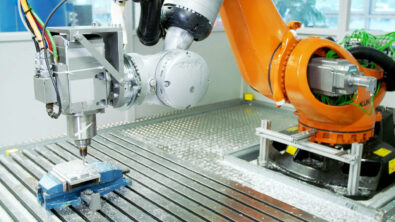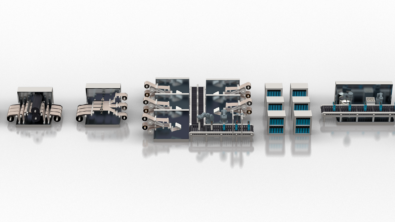Simulation for Industrial Systems Part 1-Transcript

Victoria Carlos: Hi everyone, and welcome back to our Smart Manufacturing Podcast series. I’m your host, Victoria Carlos, a thought leadership team writer here at Siemens Digital Industry software filling in for our usual host, Chris Pennington. On today’s episode, we’ll be discussing simulation for industrial systems and how they can optimize production processes, boost efficiency, and lead us to a more sustainable future. We’re joined today by our expert Rahul Garg, VP of the Industrial Machinery and Market program here at Siemens Digital Industry Software. We’ll also be speaking with Dominik Zettler, VP of Horizontal Management Simulation for Industrial Systems. We hope you enjoy the show.
Dominik and Rahul, thank you so much for being here today. Before I get started, I was hoping that you could both gives us a brief introduction and tell our listeners a little bit about your roles here at Siemens.
Dominik Zettler: Yes, since last January, I’ve been heading Horizontal Management Simulation for DI (Digital Industry), which deals with simulating industrial systems. I’m in the automation business unit, but originally, I worked as a mechanical engineer and a project manager for several years.
Rahul Garg: Welcome to our session on simulation for industrial systems and software. This is a very exciting topic. I’m Rahul Garg. I’m responsible for our industrial machinery strategy and business globally for Siemens digital industry software. I’m responsible for trying to figure out how we address all our customer needs and how to take advantage of the massive portfolio that Siemens has to offer.
Victoria Carlos: Thank you both so much for your introductions. To kick us off, I’d like to start with a pretty basic question for those who may not be super familiar with the topic we’re covering today. What is simulation for industrial systems?
Dominik Zettler: Thanks for the question. The main point is that we’re talking about machines, lines, and plants in production, or industrial systems. We focus on looking at how we could leverage these different aspects on the customer’s journey.
Rahul Garg: Dominik, that was a great brief summary of simulation for industrial software and industrial systems. To expand, we are trying to take advantage of what simulation technology can tell us about both product behavior and production behavior. We want to simulate how production processes, production lines, and production cells behave before you actually build it.
Our goal is to do a complete virtual simulation of the entire production process, production line production cell before you start job one. We highlight what simulation is for industrial systems and take a lot of those technologies to make them available to production systems as well.
Dominik Zettler: Exactly, Rahul. A perfect summary. It’s learning from a virtual prototype instead of prototyping real machines. What we know from the product world already is that the same technologies should be available in the machinery and in the line and in the cell. It’s really important to note that virtual applications will lead us to the digital twin later on. If we start on a very early stage with mechanical design and we can add additional components.
We can add the machine’s physical behavior, electrical behavior, and kinematics, and bring it together to have a real functional digital model. Afterward, we’ll be nearly as close as possible to the physical machine. And this is a totally new step here. It brings tremendous additional value to our customers once we have a full functional model available.
Rahul Garg: And a customer using this full functional model as an industrial simulation of the machine and the digital twin would not need to even build any production systems.
Dominik Zettler: Exactly. We have a lot of use cases of this. First of all, (the customer) saves a lot of time because he can do nearly everything in the virtual world now. He can now optimize the design with behavior of the machine. Additionally, the customer can avoid waste created by real prototypes while saving time. We do not need to make it physical; we can do it virtual. The customer can now look at any old designs and test them immediately, allowing him to improve the design without an expensive rework.
Victoria Carlos: So, now that we have some working knowledge of simulation for industrial systems, can you both tell us about the benefits for both machine builders and manufacturers. Additionally, why should companies invest in simulation software?
Dominik Zettler: With this virtual model available, we can apply it to various use cases. One such use case is optimization. Since we can optimize in the virtual world using the full stack software of Siemens, we can ensure that we could really perform this closed loop. We can simulate software in the loop. I don’t need hardware in the loop for simulation. I can use our products to make it in a virtual world and optimize the machine.
This is highly valuable for all the machine builders and line builders because they can optimize their system and their machine up front. They can do virtual design reviews; not only mechanical design reviews, but also full system design reviews with the customer and look at how the operator can use the machine on a virtual HMI.
We can now tell our machine builders where they do not need any expensive modifications, so that if they ship the machine to an unsatisfied customer, they can avoid a really big expense. This is the first step towards optimizing the machine. The second step is commissioning the machine and using its digital model for pre-acceptance topics. With this, you can get very early feedback from the customer. If done correctly, you can avoid a lot of reworks, costs, and so on.
Rahul Garg: Those are all great examples, Dominik. To further highlight some of those topics you mentioned, productivity can be evaluated to make sure that they are meeting the customers’ expectations. Number one, it also improves the flexibility, which the machine builder can use to address their customer’s needs.
And another area I feel that this whole simulation for industrial systems helps with is around the whole topic of sustainability and even energy usage. With the rising cost of energy, trying to ensure that you can reduce your operating cost from an energy perspective becomes very critical. And being able to simulate your energy consumption even before you start the production process can have a significant impact. Wouldn’t you agree with that, Dominik?
Dominik Zettler: Absolutely. We all know that sustainability is driving a lot of our customers. You mentioned one core aspect that we can evaluate already in the digital model: optimizing the sizing. If you couldn’t optimize the right sizing, we have may or may not have the right size. We can reduce the energy already up front. We can optimize the machine and the throughput of the machine.
We have a customer from Norway who had an old machine, and he could not apply digital twin or simulation capabilities. The company name is Tronrud. For our internal listeners, this is a public reference. They are really proud to be a part of Siemens and to utilize all our full stack software available in all our business units. We can really see how these customers are using the time to market and how they improve the sustainability aspect of their machine. Tronrud nearly doubled the throughput of their machine from the old version to the new version by applying the capabilities of what we now have. So, if we can reduce energy by selecting the right components, we can optimize the throughput of the machine. These are the core topics which depend on the industry.
We often use demos or prototypes in the physical world where we produce scrap, to test the machine. But now, we can make this test virtual, so we don’t produce even more scrap. This is the important third topic to sustainability—that we avoid producing waste. It doesn’t matter if we’re building a part of the machine or changing a component or testing the machine with virtual products instead of physical products.
Victoria Carlos: It sounds like the advantages of are clearly numerous, but I think talking about it and implementation are entirely different challenges. So, my question is what are the initial steps that OEM’s can take to implement simulation software into their operations? And how Siemens can support this journey?
Dominik Zettler: Our customers need to start the journey knowing that we (Siemens) can start on various aspects. We can start on the automation side, or we can start on the mechanical side, but we need to grow them together.
If we start on our mechanical side, we start with the classical mechanical design. Then we talk about the next step—about kinematics, or collision detection, or we could look to see if the machine is even functioning. We can talk about physics and so on. If we come from mechanical, we could build up the story step by step, and we could start in one department. It’s up to the customer to keep the ball rolling.
If you start in automation department, you can start with code validation topics and behavior models and look at how the system is behaving. The next step is to merge the two disciplines together. This is the trickiest part of the journey: making sure the customer brings his internal departments together so that they can collaborate. We can start on both sides in parallel or only focus on either the mechanical department side or the automation department side. But value only comes if you bring them together.
Rahul Garg: Yeah, I agree with you, Dominik. Taking some incremental steps to mature on the journey is obviously very important. What we have found is customers first try and do a virtual simulation of a unit. It could be a machine, or it could be a handling system. They start with that and then expand that out as they grow. Like the examples you just mentioned, where they are responsible for providing the packaging of potato chips.
But before you get to the packaging, there are many more things that happen in a potato chip factory. Just starting with that process becomes a good way to start your journey. And virtually commissioning a part of that machine or the whole machine itself becomes a great steppingstone into that process. From there they can go into other areas where you can evaluate a complete virtual plant design as well or a virtually complete aligned design. So, you can then get into more sophisticated ways of evaluating your entire production system. Maybe we can speak a little bit about that as well.
Dominik Zettler: Absolutely. We could start on the higher level and look for the channel plants throughput. These are possible to start with and bring these building blocks together.
We have different entry points for the customer to get engaged. We tease the possibilities from beginning. We say, “look this is the potential you can have.” Either we start with single steps, or we show the customer, especially the machine line builders, the full potential, even if they start step by step. And we have different points where we could start that we need to bring together as more customers utilize both digital and virtual models. The more it is integrated into his processes, the more value he gets.
One thing we did not talk about yet: potentially enabling a machine or line builder to gain additional revenue streams. If they have a digital model, they could sell this digital model to their customers and say, “look, you can perform operator training before I ship the machine to you. You can train your future workforce to operate this machine on a digital model.” And these days, in the most cases, they can monetize it. If they do it, they are creating additional value for their customers. If you can separate yourself from other competitors, which are not getting into this digital twin and simulation topics, you can go beyond your competitors.
Rahul Garg: That’s a great idea. Where companies can take advantage of this, not only to differentiate themselves, but also to use it as a mechanism to work more collaboratively with their customers. Because as they are designing the machine and making updates, you can actually use a virtually simulated model of your machine. And share that with your end customer.
If you’re designing the machine in Germany and you’re the customer sitting in Brazil, you can have the customer from Brazil do a virtual simulated run of the entire machine without actually coming to Germany or traveling. And you can get the entire feel of how that machine will function remotely as well. So, that certainly becomes a great example of how some of these first steps can be leveraged.
Victoria Carlos: This has been episode one of our two-part series on simulation for industrial systems. Stay tuned for our next episode where we’ll dive deeper into simulation’s role in the digital twin industrial metaverse and the importance of cybersecurity.
Thanks so much for listening, and we’ll see you again next time.
Siemens Digital Industries Software helps organizations of all sizes digitally transform using software, hardware and services from the Siemens Xcelerator business platform. Siemens’ software and the comprehensive digital twin enable companies to optimize their design, engineering and manufacturing processes to turn today’s ideas into the sustainable products of the future. From chips to entire systems, from product to process, across all industries. Siemens Digital Industries Software – Accelerating transformation.


